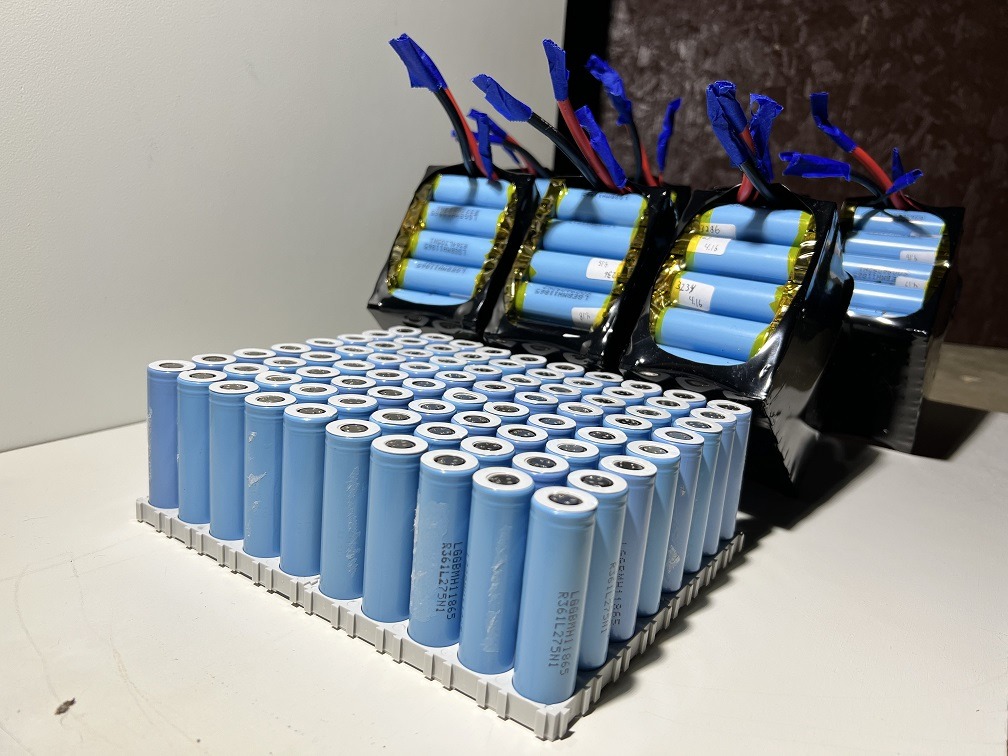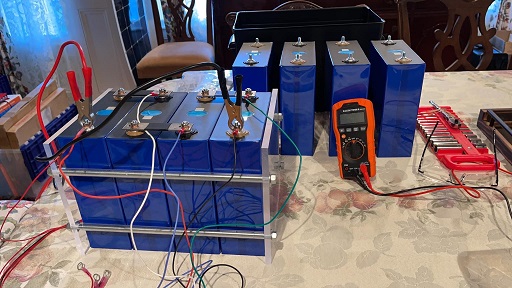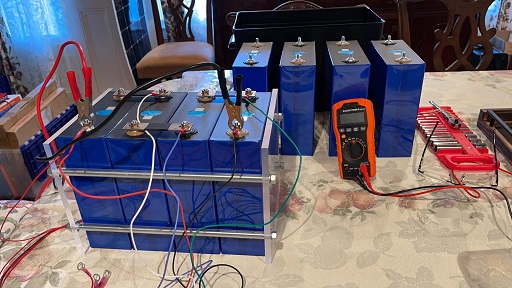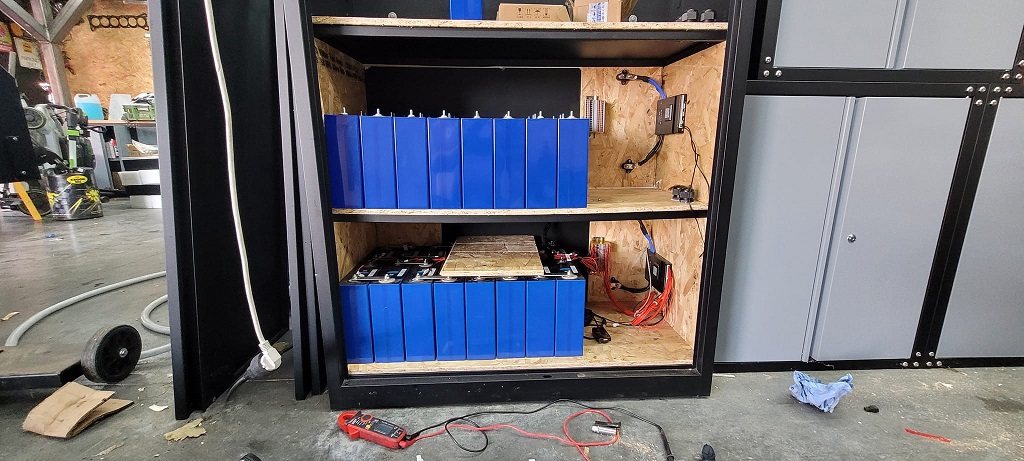
How To Calculate Powerwall Size and Capacity
Table of Contents
- What Voltage Is Best For Powerwalls?
- How To Size A Powerwall Battery For 3 Days
- Lithium Ion Is The Best Battery For Powerwalls
- How To Calculate Powerwall Size For 24 Hours
- How To Calculate Powerwall Size For 8 Hours
- Things To Consider When Sizing A Powerwall Battery
- Complete Home Power Solutions Are Expensive
If you are new to batteries and want to know how to calculate powerwall size, it can be an overwhelming task. If you choose too small of a battery, then you will run out of power when you need it most. If you choose too much battery capacity, you will end up paying much more for your powerwall setup than you have to.
Knowing How to calculate powerwall size can be the difference between a great experience and a total disaster. Properly sizing a powerwall battery is the first step in designing an off-grid system and determining the costs of building a DIY or buying a prebuilt powerwall. The amount of energy storage you need is going to be based on your energy consumption. The most common way to measure energy usage is in kilowatt-hours.
If you are wondering how to calculate powerwall size, it’s done like this: Find out how much power your house uses in a 24-hour period. Then, multiply that figure by how many days you would like your house to be able to operate off-grid. Then, multiply that figure by 1.2 to compensate for the 80 percent discharge level of lithium-ion batteries. Finally, multiply what you have now by 1.05 to compensate for the 95 percent efficiency level of the lithium-ion battery charging process.
[[ aff type=cta ~ bg=`` ~ main=`Guided Powerwall Planner` ~ second=`Need help figuring out your powerwall build? Use the tool found at the link below to get guided through the process. ` ~ btnText=`Powerwall Planner` ~ btnLink=`https://cellsaviors.com/powerwall-planner` ~ align=`center` ]]
What Voltage Is Best For Powerwalls?
Powerwall batteries are generally made to work with either 12, 24, or 48-volt equipment. The amount of power that is transferred is a product of the voltage and the current. Having a higher voltage means you will have to use much less current to get the same amount of power transferred.
Here are a few examples with a 1500W load:
1500 watts ÷ 12 volts = 125 amps
1500 watts ÷ 24 volts = 62.5 amps
1500 watts ÷ 48 volts = 31.25 amps
As you can see, with all else being equal, it’s better to have a higher voltage. With the voltage being higher, everything in the system has to do less work to achieve the same amount of power.
Cabling can be expensive, especially for longer runs. Having a higher voltage means you can use much thinner cabling because the cables have to carry much less current.
How To Size A Powerwall Battery For 3 Days
The average American house uses about 10000kWh per month or about 32kWh per day. So, If your house uses 3.5kw for 10 hours every day, and then 1kw for the remaining 14 hours, your house's total energy consumption for a 24-hour period would be 49kWh.
House Power Requirements:
32 kWh per day
Total Energy Usage for 3 days:
32 kWh per day x 3 days = 96kWh
Total Required Energy Storage 3 days:
96 kWh x 1.05 (for charging efficiency) x 1.2 for lion depth of discharge = 120.96 kWh
NOTE: The above formulas and examples are only applicable to lithium-based batteries. As you can see from the information below, there is no reason to use lead-acid batteries. The best solution in this day in age is always to use lithium-ion over AGM or lead acid.
Lead Acid Sizing
96 kWh x 2 (due to 50% depth of discharge) x 1.2 (because lead acid battery charging is only 80 percent efficient) = 230.4 kWh
With a lead acid setup, you would need 230.4kWh worth of batteries to keep your 32 kWh house running off-grid for a solid 72 hours.
Lithium Ion Is The Best Battery For Powerwalls
Powering the same house with a lithium-ion system for 72 hours would only require only 120.96kWh of energy storage compared to 230.4 kWh for lead acid. Lithium-ion batteries are the clear winner here.
Battery capacity is generally specified in amp hours rather than kilowatt hours. The amp hours required can be determined by dividing the total watt-hours by the system voltage. So, if you need 120.96k kWh of energy storage and are using a 48V setup, then you will need about 2500 amp hours of battery storage.
DIY powerwall batteries are generally wired in either a 12-volt, 24-volt, or 48-volt configuration. If you are working with 24-volt batteries, then you will need twice as many amp hours to achieve the same watt-hours. A 12-volt setup will require double again.
120960-watt hours ÷ 48 volts = 2520 amps hours
120960-watt hours ÷ 24 volts = 5040 amps hours
120960-watt hours ÷ 12 volts = 10080 amps hours
How To Calculate Powerwall Size For 24 Hours
The same formulas can be applied to the same house for 1 day instead of 3. While we could just divide what we got before by 3, we would instead like to take the time to explain exactly how to get to that figure again.
Total Energy Usage for 24 hours:
32 kWh per day x 1 days = 32kWh
Total Required Energy Storage 1 day:
32 kWh x 1.05 (for charging efficiency) x 1.2 for lion depth of discharge = 40.32 kWh
40320Wh ÷ 48 volts = 840 amps hours
40320Wh ÷ 24 volts = 1680 amps hours
40320Wh ÷ 12 volts = 3360 amps hours
As you can see, powering a house for 24 hours is much more within reach than powering the same house for 3 complete days. Just over 40 kWh of lithium-ion batteries, however, are still very expensive and out of reach for most people. So, let’s run the numbers again for a more reasonable period of time.
How To Calculate Powerwall Size For 8 Hours
In the United States, the power generally does not go out for very long unless there is a large-scale natural disaster. While those things do happen, they are still very rare. Chances are if you can keep your home up and running for a few hours, the power will be back on before your batteries run out of usable energy.
Total Energy Usage for 24 hours:
32 kWh per day x 1 days = 32kWh
Total Energy Usage for 1 hour:
32 kWh ÷ 24 hours = 1.33kWh
Total Energy Usage for 8 hours:
1.33 kWh per hour x 8 hours = 10.64 kWh
Total Required Energy Storage 3 days:
10.64 kWh x 1.05 (for charging efficiency) x 1.2 for lion depth of discharge = 13.40 kWh
13400Wh ÷ 48 volts = 279 amps hours
13400Wh ÷ 24 volts = 558 amps hours
13400Wh ÷ 12 volts = 1117 amps hours
As you can see, we have drastically reduced the required battery capacity for our example of how to calculate powerwall size. This size battery starts to become within reach for most people, and the great news is that it's super easy to increase the capacity of a home energy storage system later.
The problem still remains, however, that to be able to attach your powerwall battery directly to your house's circuit breaker (and therefore power all the large appliances in your house), you will still need expensive inverters and lots of cabling.
Things To Consider When Sizing A Powerwall Battery
Ambient Temperature
How hot or cold your battery gets will drastically affect its capacity, performance, and lifespan. For example, If you have to run your batteries in a non-climate-controlled area of your house, then they are not going to have their peak performance. You can also do some work to keep your battery pack warm in the cold months to keep it running at peak performance.
Budget
The battery bank is the most expensive component of any off-grid energy system. So, the size of the battery bank is a compromise between what is desired and what is financially within reach.
Current Carrying Capacity
Having the required energy storage is only half the battle. You must ensure that your battery can support the maximum load you plan on asking for. For example, if you are running a 3-kilowatt load at 48 volts, that represents a current of 62.5 amps. It’s always good to leave a little bit of overhead because it's never good to run batteries (or really anything else) at its peak capacity.
So, adding in 20% for headroom, you would need to make sure that your batteries and cabling can support at least 75 amps of continuous current.
Complete Home Power Solutions Are Expensive
Not only is it prohibitively expensive for most people to power an entire house for 3 days in terms of energy storage, but it's also somewhat expensive to be able to fully use all that power. Remember, if you plan on powering your entire house, including the A/C, heater, ovens, stove, and toaster, then you are going to also need some pretty expensive inverters to make all that work.
Another added cost is all the cabling required to hook everything up. For a 48-volt system, this cost is relatively low. But when running a 24 volts setup, you will need cabling that is twice as large to run the same amount of current. If you are planning on a 12-volt setup, then you would want cable 4 times as large as you would for a 48V system for the same amount of power.
Conclusion
The process of calculating powerwall size can feel overwhelming to newcomers. Once you learn a little bit about how the whole process works, however, you can see that the process is pretty straightforward.
The formula to calculate powerwall size is actually pretty simple. All you have to do is find out how much power your home uses in a 24-hour period. Then, multiply that value by the number of days of off-grid power you would like. After that, you have to multiply whatever that is by 1.2 to compensate for the 80 percent discharge level of lithium-ion batteries. The final step is to multiply the value by 1.05 to make up for the fact that the lithium-ion battery charging process is 95 percent efficient.
We hope this article helped you learn everything you needed to know about how to calculate powerwall size. Thanks for reading!






